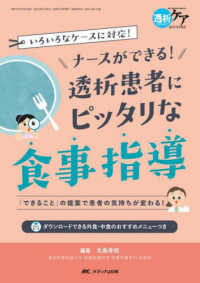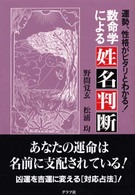Full Description
At a time when misinformation in the media is abundant, this book explains the difficulty in nurturing students to become critical researchers and offers practical lessons that empower students to excavate information that will help them learn.
This guide to teaching news literacy explores a wealth of resources and classroom-tested lessons that educators in grades 7-12 can use in their own libraries and classrooms. To introduce the concept of news literacy, the authors explain the steps of the inquiry and research process in detail and examine the Stanford History Education Group (SHEG) 2016 report "Evaluating Information: The Cornerstone of Civic Online Reasoning" and related research studies.
Lesson plans corresponding to each stage of the process are coordinated to relevant standards from the CCSS and ISTE and are accompanied by rubrics for providing students feedback on their progress as well as samples of student work as it evolved through the stages. Furthermore, the authors' anecdotal insights from their experiences in collaboratively implementing the lessons with colleagues are an invaluable addition for any librarian seeking to work with teachers to help students become critical researchers.
Contents
1—Introduction to News Literacy
2—A Brief History of Disinformation
3—What the Research Says about Students' Media Literacy
4—Echo Chambers, Filter Bubbles, and Likes, Oh My!
Do Your Students Know There Is a Problem?
The Age of the Citizen Journalist
5—The Stages of Research: A Model
Wonder
Investigate
Synthesize
Express
Review
6—Lessons for Developing Information Literacy
Developing Research Questions
Lesson 1: Question Stems
Lesson 2: The QFT
Lesson 3: What Is My Bias?
Lesson 4: Primary Source Close Reading
Lesson 5: Text, Context, and Subtext in Primary Sources
Lesson 6: Agree and Disagree with Primary Source Authors
Lesson 7: What Is This Source?
Lesson 8: Source Evaluation
Lesson 9: Which Source Does the Job?
Lesson 10: How Can Two Writers Reach Such Different Conclusions?
Lesson 11: Editorials, Op-Eds, and Blogs, Oh My!
Lesson 12: Reading for Editorial Bias
Lesson 13: Not All Editorials Are Essays
Lesson 14: Opinion in Many Forms
Lesson 15: Parody and Satire
Lesson 16: Propaganda, Hoaxes, and Other Forms of Manipulation
Lesson 17: Analysis of Social Media as a Tool for Persuasion
Lesson 18: Fact-Checkers
Lesson 19: Anatomy of a Stump Speech
Lesson 20: Unpacking a Visual Text—Paintings
Lesson 21: Unpacking a Visual Text—Photographs
Lesson 22: Building Capacities for Critical Thinking by Fostering Empathy
Lesson 23: Branding and Advertising
Lesson 24: Expose the Trail
Lesson 25: Protection by the First Amendment
Lesson 26: Media Watch
Overcoming Student Resistance to Close Reading
7—Citations Are a Tool for Source Evaluation
Appendix 7A: Bibliography Feedback Comment Bank
Appendix 7B: MLA 8 Self-Guided Instruction—Checks
Appendix 7C: Bibliography Quiz
Appendix 7D: Bibliography Checkbric
8—Big Takeaways
9—A Longer Unit of Study
Unit 1: Should I Share This?
Unit 2: How Can Something Be Both Biased and Meaningful?
Unit 3: Why Can't I Separate the Medium from the Message?
Unit 4: Problem-Based Learning: How Can I Use Digital Media for Good?
10—Rubrics
Works Cited
Index








